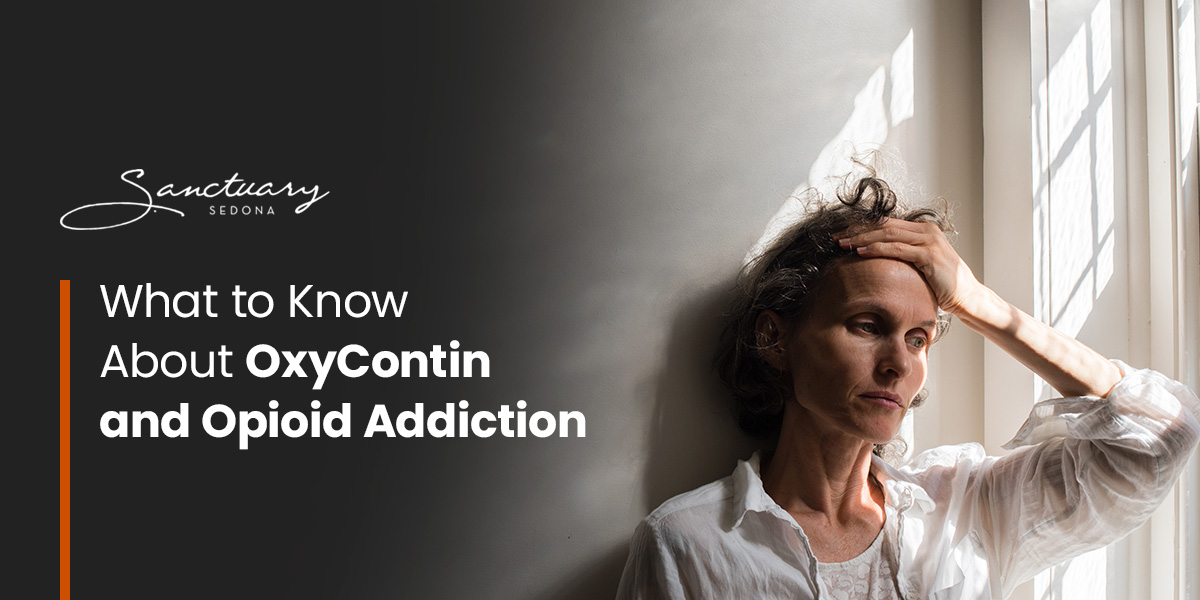What to Know About OxyContin and Opioid Addiction
OxyContin, a prescription opioid, continues to be a leading pain relief medication for many individuals. However, its potent effects can quickly spiral into dependency. Addiction affects the body and takes a toll on a person’s mind and emotions.
What Is OxyContin?
OxyContin is a prescription medicine used to manage moderate to severe pain. The drug falls under the category of opioids, which are known for their powerful pain-relieving effects. OxyContin releases its active ingredient, oxycodone, slowly over time, which can provide consistent pain relief. However, when it’s not used as directed or when it’s taken for reasons other than prescribed, the risk of developing an addiction increases dramatically.
Causes of OxyContin Addiction
OxyContin addiction stems from various circumstances, experiences and vulnerabilities.
Trauma
If a person has experienced physical or emotional trauma, they might turn to OxyContin to numb the pain. This could be the pain of a past event, like childhood abuse, a severe accident or the loss of a loved one.
The emotional scars from such experiences can be deep. For a person seeking relief, opioids might seem like a solution. Over time, what starts as a way to cope can evolve into a dependency, where the drug becomes a necessary part of daily life just to feel normal.
Genetic Predisposition
Individuals with a family history of substance abuse might be more susceptible to developing an addiction. Genetics can influence how a person’s body and brain respond to substances like OxyContin, making it easier for them to become dependent on the drug. This doesn’t mean they’re destined to become addicted, but they should be cautious when it comes to substances with high addiction potential.
Mental Health and Self-Medication
Conditions like anxiety, depression or PTSD might lead a person to turn to OxyContin as a way to self-medicate. The drug can temporarily alleviate the symptoms of these conditions and provide a sense of relief. However, this is only a short-term solution that often leads to long-term problems.
The more an individual relies on OxyContin to manage their mental health, the more likely they are to develop an addiction. Over time, they may need higher and higher doses to achieve the same relief, which only deepens the cycle of addiction.
Environmental and Social Factors
If a person is in an environment where drug use is common or they’re surrounded by people who abuse substances, they may be more likely to use OxyContin. Stressful life circumstances, like financial difficulties, relationship problems or job-related stress, can also contribute to the onset of addiction. The medication might be used as a means to escape from these pressures by offering temporary relief.
Signs and Symptoms of OxyContin Addiction
Addiction can manifest in various ways, affecting a person’s behavior, physical health and mental well-being. Recognizing the signs and symptoms of opioid dependence in yourself or a loved one can help you seek help early on.
Behavioral Signs
Addiction often leads to noticeable changes in behavior, such as:
- Doctor shopping: Going to multiple doctors to get more prescriptions
- Secrecy: Hiding drug use from friends and family, lying about their whereabouts or avoiding social situations to use the drug
- Neglecting responsibilities: Missing work or failing to meet other obligations because of drug use
Physical Symptoms
The physical signs of OxyContin dependency can vary, but common symptoms include:
- Drowsiness or dizziness
- Constricted pupils
- Nausea and vomiting
- Suppressed breathing
Psychological Symptoms
Addiction can significantly affect a person’s mental health and lead to:
- Mood swings or irritability
- Constantly thinking about their next dose or how to get more OxyContin
- Making poor decisions
OxyContin’s Effect on the Brain
Opioids affect how the brain functions, which can lead to both physical and psychological dependence. One might experience the following effects:
- Pain relief and euphoria: OxyContin binds to opioid receptors in the brain and other nerves, which blocks pain. Alongside pain relief, OxyContin also triggers a massive release of dopamine, which creates intense feelings of pleasure and euphoria. This euphoric effect is what often leads to misuse and eventually addiction because a person may find themselves chasing that feeling.
- Suppressed breathing: Opioids slow down the central nervous system, which can lead to slowed or shallow breathing. In severe cases, this can cause respiratory arrest or death.
- Drowsiness or dizziness: OxyContin causes extreme drowsiness or dizziness, which can impair a person’s ability to function normally. The drug affects the brain’s ability to process sensory information and maintain alertness.
How to Heal From Opioid/OxyContin Addiction

At The Sanctuary at Sedona, we believe in treating the whole person. Our holistic, non-12-step recovery program integrates physical, emotional and spiritual healing techniques to help you achieve lasting recovery.
Physical Healing and Detox
Detoxification is often the first vital step in overcoming addiction, and we believe it should be done in a way that nurtures and supports your body. We offer a safe and supportive detox program designed to minimize withdrawal symptoms and cleanse your system from the harmful effects of OxyContin. One of the key components of our detox process is the use of organic, anti-inflammatory foods to support your body’s natural healing process.
Integrative Therapies
Beyond physical detox, our opioid addiction treatment heals the mind and body by addressing the underlying psychological and emotional factors that contribute to addiction. These therapies include:
- Cognitive behavioral therapy (CBT): Through CBT, we help you identify and change the thought patterns and behaviors that perpetuate addiction. This helps you develop coping strategies to manage stress, anxiety and other triggers.
- Mindfulness and meditation: We incorporate mindfulness practices that encourage you to be present and fully engage in your healing journey. Meditation helps calm the mind, reduce stress and foster a deeper connection with your inner self.
- Somatic experiencing therapy: This therapy focuses on releasing the physical tension and trauma stored in the body. When you address deeply held physical and emotional blocks, you can regain a sense of safety and ease in your body.
Spiritual Healing
Incorporating spiritual practices allows you to connect with your inner self and find meaning in your recovery journey. Some of the spiritual healing modalities we provide include:
- Energy healing therapy: Techniques like Reiki can balance the energy fields around the body, promoting a sense of peace and well-being.
- Visualization: This technique can help you connect with your higher self and envision an addiction-free future.
- Sacred ceremonies: We offer group ceremonies that draw on ancient wisdom traditions, which help you release past traumas, set intentions for your healing and connect with a supportive community.
Aftercare and Ongoing Support
Recovery is an ongoing process that requires continued support. That’s why we offer an aftercare treatment to help you work through any challenges that arise as you transition back into daily life, maintain sobriety and continue your healing journey. This service includes:
- Ongoing therapy
- Support groups
- Access to resources
Pursue OxyContin Addiction Treatment at The Sanctuary
OxyContin and opioid addiction recovery is possible with the right support. At The Sanctuary, we’re committed to helping you heal holistically by addressing your life’s spiritual, emotional and physical aspects. If you or a loved one is struggling with OxyContin addiction, contact us today to find out how we can help you start your healing journey.


